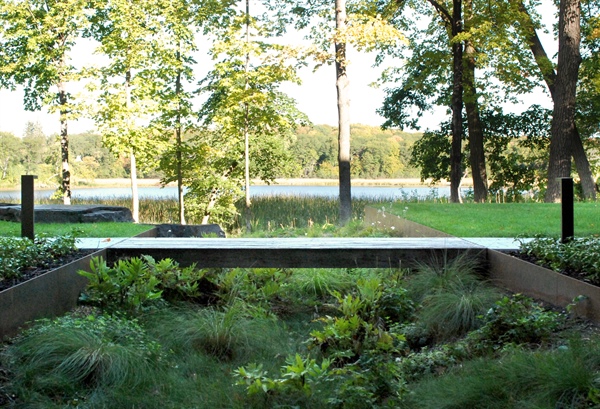Best Native Plants for Sustainable Landscaping in the Twin Cities

In the heart of the Twin Cities, sustainable landscaping is more than just a trend—it's a conscious movement to protect native ecosystems and promote environmental balance.
Homeowners and property managers are increasingly turning to native plants as a smart solution to create thriving, beautiful landscapes that demand less maintenance while delivering critical environmental benefits.
Choosing the right native plants not only enhances curb appeal but also contributes to ecological resilience in the Minneapolis-St. Paul region, where climate considerations and biodiversity are central to sustainable outdoor design.
Native plants are uniquely suited to Minnesota’s climate, making them hardy, water-efficient, and better adapted to local conditions than many ornamental varieties. These characteristics allow them to thrive with fewer inputs while supporting local pollinators, birds, and other wildlife.
Whether you’re updating a residential garden or managing a commercial site, integrating native species into your plantings and gardens can help create sustainable beauty that lasts through the seasons. Here's what our experts want you to know before planting your native garden.
How Native Plants Enhance Biodiversity in Twin Cities Landscapes
Native plants play a critical role in promoting biodiversity by creating habitat corridors and food sources for local wildlife. In the Twin Cities, this includes supporting species such as monarch butterflies, native bees, songbirds, and small mammals.
Unlike many non-native plants, native species have co-evolved with regional fauna, offering the right type of pollen, nectar, foliage, and shelter needed for survival and reproduction.
Plants like butterfly weed, wild columbine, and purple coneflower attract a diverse array of pollinators throughout Minnesota's growing season, strengthening the ecological web in both residential and commercial landscapes.
Beyond pollination support, native plants provide nesting materials and seasonal resources that help sustain species through migration and hibernation.
The complex root systems of these plants also improve soil health by fostering microbial diversity underground. These benefits ripple outward—healthy soils encourage more plant growth, which in turn supports a broader range of life forms.
By integrating native plants into designed environments, landscapes can become miniature ecosystems that help offset habitat loss due to urban development.
When incorporated into plantings and gardens, native species serve as ecological building blocks. They establish resilient, self-sustaining plant communities that mirror those found in natural Minnesota habitats like prairies, woodlands, and wetlands.
This biodiversity enrichment strengthens urban green spaces and creates lasting value for property owners committed to environmental stewardship.
Top Native Perennials That Thrive in Minneapolis's Harsh Climate
Minneapolis’s unique climate—marked by cold winters, warm summers, and variable precipitation—demands hardy, adaptable plants. Several native perennials have proven performance in this region and form the backbone of sustainable landscape design.
Here are some of our top choices:
- Purple coneflower (Echinacea purpurea) is a standout, offering drought tolerance, structural appeal, and extended bloom periods that attract pollinators.
- Black-eyed Susan (Rudbeckia hirta), with its bright yellow flowers, thrives in full sun and poor soils, making it an ideal choice for difficult sites.
- Wild bergamot (Monarda fistulosa), a favorite of hummingbirds and bees.
- Prairie dropseed (Sporobolus heterolepis), a warm-season grass valued for its fine texture and erosion control capabilities.
- For shadier areas, wild ginger (Asarum canadense) and Solomon’s seal (Polygonatum biflorum) provide lush, ground-hugging foliage with minimal maintenance. All these perennials share deep root systems that contribute to soil stability and efficient water use.
These plants form the core of effective landscaping strategies in the Twin Cities, particularly for clients looking to reduce their environmental footprint.
Their compatibility with local soil profiles and microclimates means fewer inputs are needed to establish and sustain a healthy landscape, making them reliable long-term choices for eco-conscious property development.
Understanding the Maintenance Needs of Native Plant Gardens
While native plants are often labeled “low-maintenance,” they are not “no-maintenance.”
In the early stages, garden preparation and plant establishment require careful attention. Site selection, soil amendment (only when necessary), and proper planting depth are crucial to ensuring long-term success.
Once installed, regular watering is needed during the first growing season until root systems are fully established. This initial phase typically lasts 12 to 18 months, depending on the site conditions and the selected species.
After establishment, maintenance shifts toward seasonal upkeep. Tasks include spring debris removal, occasional weeding, and spot mulching to manage invasives and retain soil moisture.
Deadheading may be used to extend bloom times; however, many native plants benefit from allowing seed heads to remain through fall and winter, which supports wildlife and adds visual interest.
Unlike turfgrass, native gardens do not require mowing or fertilization, and pruning is typically minimal.
In the long term, native gardens develop a self-sustaining balance, with mature plants crowding out weeds and soil microbes enhancing nutrient cycling.
This reduced need for chemical inputs and irrigation makes native gardens highly cost-effective over time, especially in large-scale applications.
A well-designed native landscape minimizes routine labor while maximizing ecological value—an important consideration for those integrating green infrastructure into residential or commercial settings.
Partner with Natural Environments Corp. for Expert Native Landscaping Solutions
Sustainable landscaping isn’t just about plant selection—it’s about long-term performance, environmental integrity, and thoughtful design.
Natural Environments Corp. brings decades of experience and a deep understanding of native ecosystems to every project in the Twin Cities.
Whether you're looking to enhance biodiversity, choose climate-resilient perennials, reduce water consumption, simplify maintenance, or protect your property from erosion, our team has the expertise to help you succeed.
Our approach is grounded in ecological principles and supported by award-winning design, on-site plant specialists, and precise execution.
From native plantings and gardens to comprehensive shoreline restoration, we create landscapes that not only meet functional needs but also reflect Minnesota’s natural beauty. Our projects are managed with transparency, integrity, and a commitment to sustainability at every stage.
To learn how we can transform your property with native plant solutions, request a quote online today or call 763-544-8002. Let us help you create a lasting, beautiful landscape rooted in local ecology and built for long-term success!